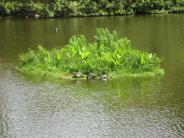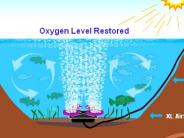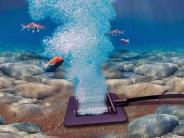Stormwater retention ponds (lakes)
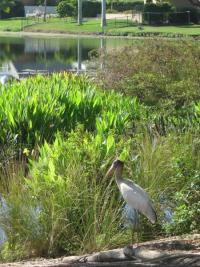 Stormwater ponds (lakes) are an integral component of the City's stormwater management and function as retention areas. They intercept and collect stormwater runoff and help to clean the water before flowing into our natural waterways. They also provide habitat for aquatic plants and animals, and are considered an amenity to surrounding residents.
Stormwater ponds (lakes) are an integral component of the City's stormwater management and function as retention areas. They intercept and collect stormwater runoff and help to clean the water before flowing into our natural waterways. They also provide habitat for aquatic plants and animals, and are considered an amenity to surrounding residents.
Any work that places solid material (e.g. riprap or deck) in a pond within the City requires approval from City council through a petition process (Lake Fill Petition Application) and a building permit.
Maintaining neighborhood ponds and landscaping wisely can help improve water quality in our bays and the Gulf. Shoreline vegetation (littoral zone) not only helps stabilize shorelines and filter pollutants (such as the nutrients found in fertilizers) in stormwater runoff, but also provides critical habitat and food for many animals such as frogs, insects, snails, birds, and turtles.
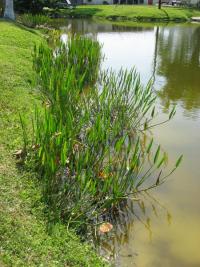
Aerators and littoral plantings are environmentally friendly ways to maintain pond quality. Substances applied to the ponds need to be carefully considered as most of these ponds flow into our natural waterways. Copper-based herbicides are commonly used to kill algae in stormwater retention ponds (lakes) and these chemicals can end up in our bays and the Gulf. Naples Bay is considered polluted for copper by state and federal agencies. Copper can be toxic to aquatic organisms and does not break down in the environment and, therefore, accumulates in the sediment. Environmentally friendly algal treatments should be prioritized first for pond maintenance.
Filter feeders such as oysters can have high copper concentrations as they can accumulate copper when feeding. Naples Bay has been found by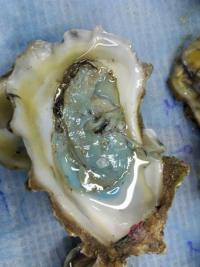 NOAA to have one of the highest copper concentrations in oysters in the nation. Copper is harmful to human health, causing nausea, vomiting, stomach cramps, or diarrhea; high intakes of copper can cause liver and kidney damage and even death. Planting the right littoral plants, fertilizing wisely, and installing aerators all help maintain pond quality without the use of harmful chemicals.
NOAA to have one of the highest copper concentrations in oysters in the nation. Copper is harmful to human health, causing nausea, vomiting, stomach cramps, or diarrhea; high intakes of copper can cause liver and kidney damage and even death. Planting the right littoral plants, fertilizing wisely, and installing aerators all help maintain pond quality without the use of harmful chemicals.
More information on how these systems work to help reduce stormwater pollution and how to maintain stormwater systems, including a list of suggested aquascaping plants can be found in the Neighborhood Guide to Stormwater Systems and on the Greenscape Alliance website.

